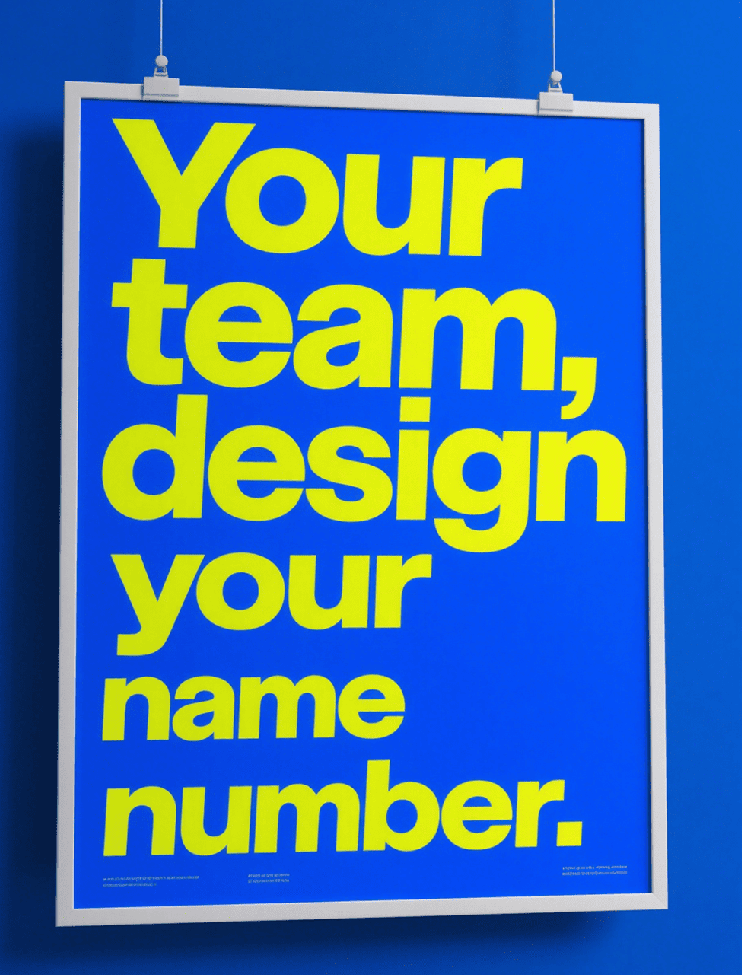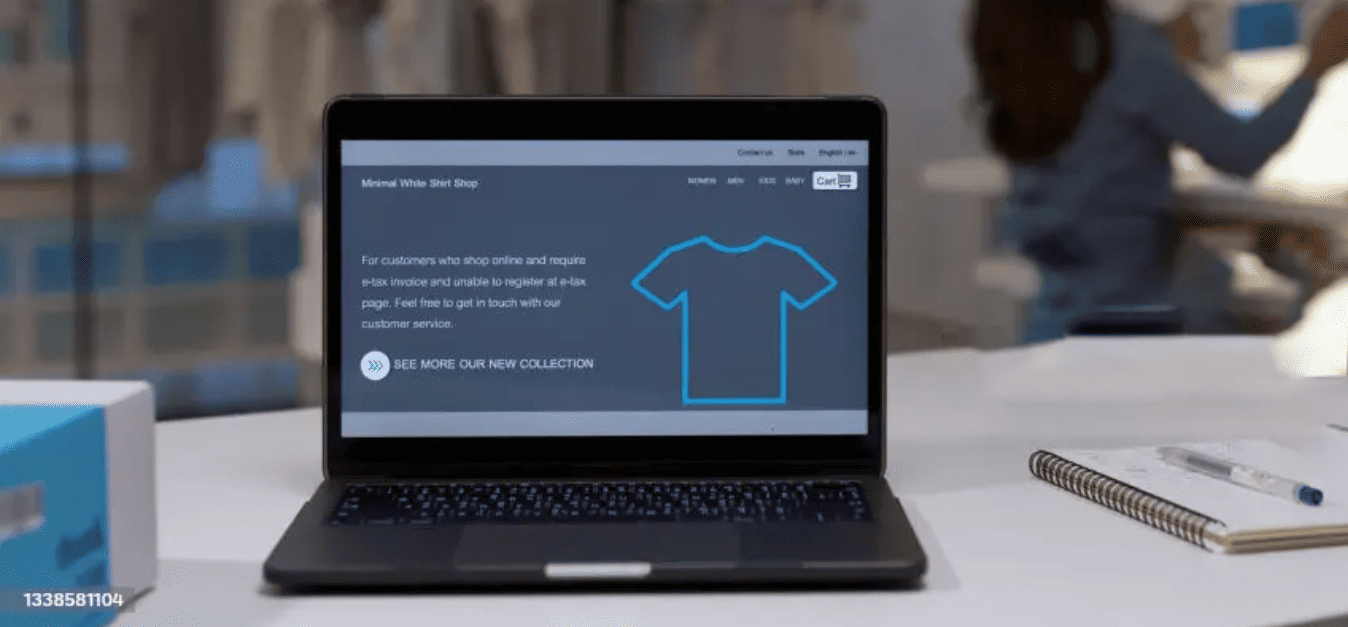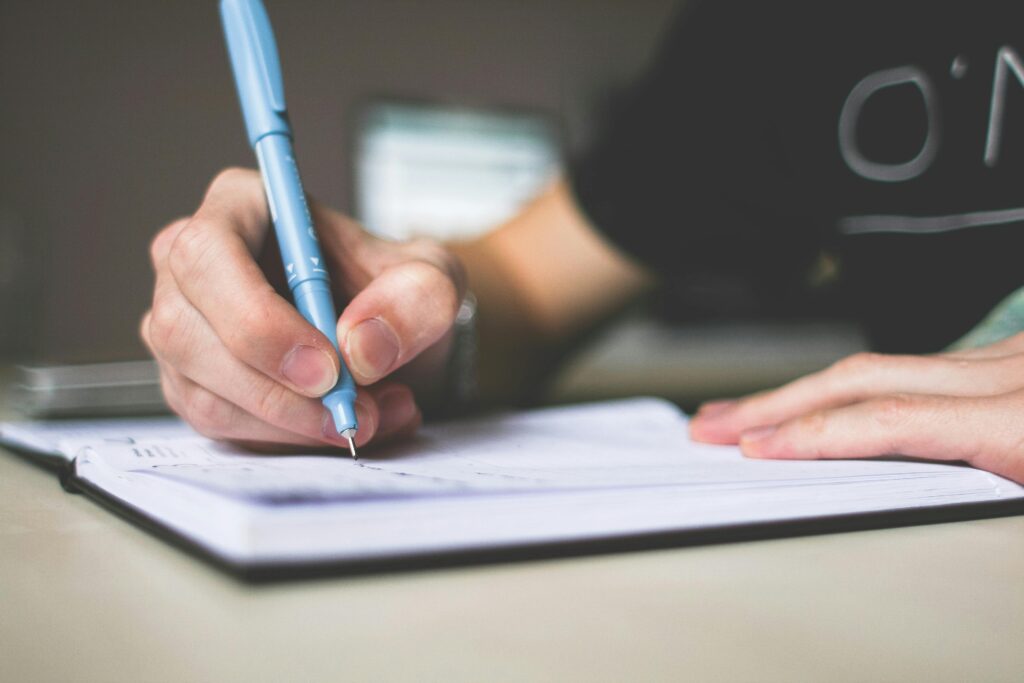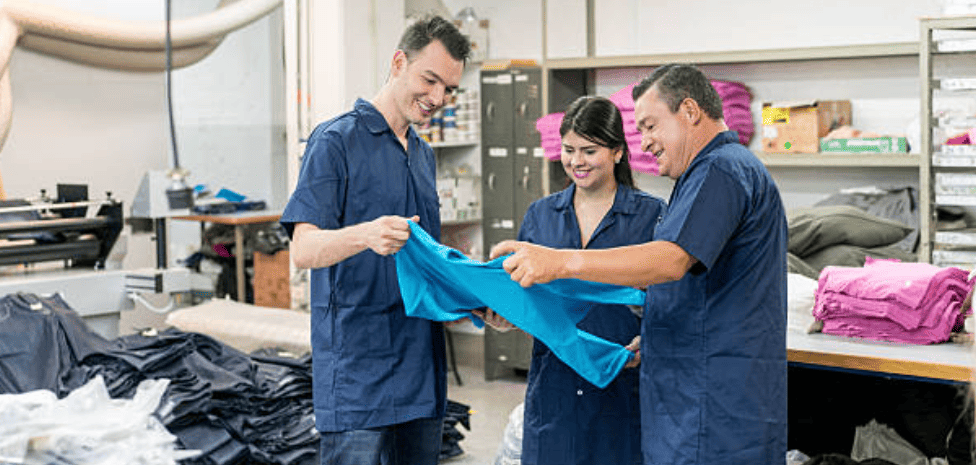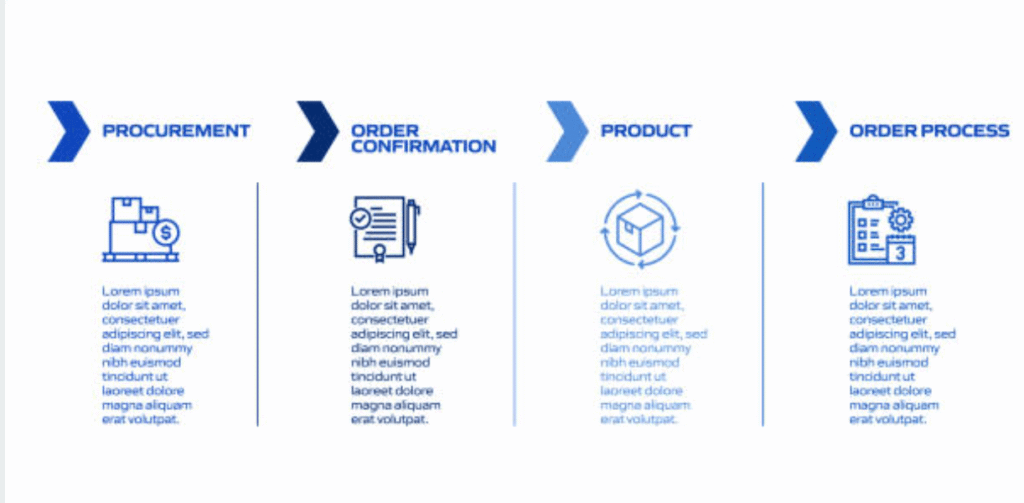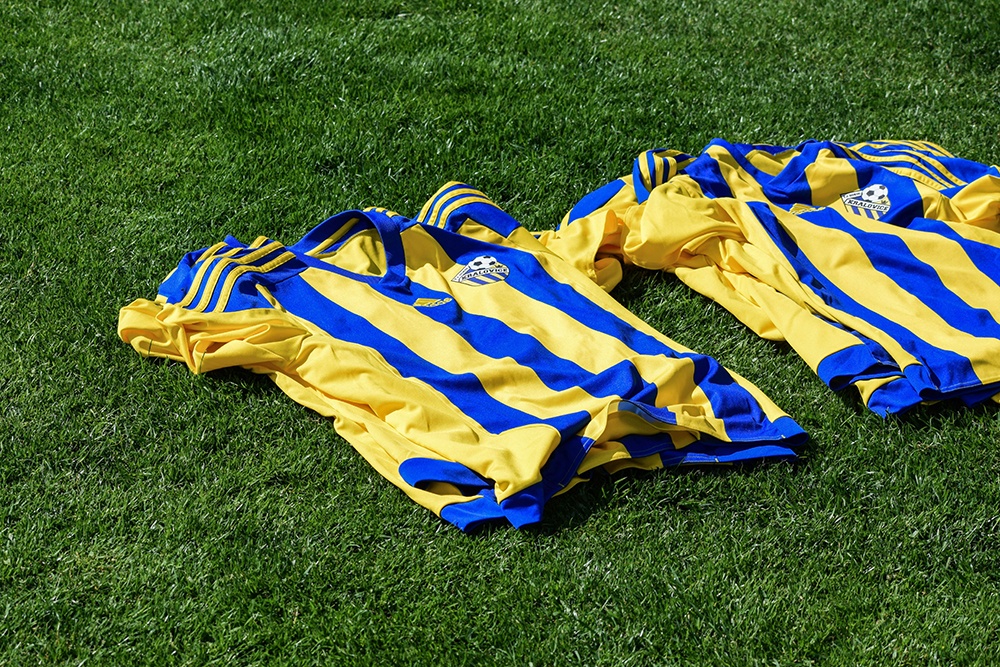SPORTSWEAR
How to Get Custom Soccer Uniforms for My Team?
Table of Contents
- What Are Your Design Requirements and Budget?
- Where Can You Find Reliable Custom Uniform Suppliers?
- How Does the Design and Approval Process Work?
- What Customization Options Are Available (Materials, Names, Numbers)?
- What Are the Key Steps in Placing an Order and What is the Timeline?
- How to Ensure You Get What You Paid For? (Quality Check & Delivery)
- Conclusion
Introduction
Are you looking to get awesome custom soccer uniforms for your team but not sure where to start? Maybe you’re worried about getting the design right, finding a good supplier, or making sure the quality is top-notch.
Getting custom uniforms should be exciting, not stressful! My name is Nancy, and I own a company in China called Sihola Sports. We make custom sportswear, including soccer uniforms, for teams and businesses all over the world, especially in North America and Europe. I’ve helped many people, just like you, through this process.
This article will break down the steps to get the perfect custom soccer uniforms for your team. I’ll share my insights as a manufacturer to make it easy for you.
1. What Are Your Design Requirements and Budget?
Feeling unsure about how to translate your team’s vision into a concrete design, or how much it will all cost? This initial planning is key to a smooth process.
First, define your team’s look: colors, logo, style. Then, determine your budget per uniform. Knowing these will help you communicate clearly with suppliers and narrow down your options effectively.
This clarity upfront will save you time and help suppliers provide accurate quotes and relevant suggestions.
Before you even start looking for a supplier, it’s really important to have a good idea of what you want and how much you can spend. This will make the whole process much smoother. Think of it like planning a party – you need to know your theme and your budget before you start booking things!
1.1 Figuring Out Your Design
What do you want your uniforms to look like?
- Team Colors: What are your main team colors? Are there secondary or accent colors you want to include?
- Logo: Do you have a team logo? If so, you’ll need a good quality digital file of it (like a vector file – .ai, .eps, or .svg is best). If not, do you need help creating one? Some suppliers, like my company, can offer basic design assistance.
- Style Inspiration: Do you have any ideas for the style? Maybe you’ve seen professional team jerseys you like, or perhaps you want something completely unique. Look at different jersey styles – collar types (V-neck, round neck), sleeve types (raglan, set-in), and overall fit.
- Information on Uniforms: What information needs to be on the uniforms? Player names? Player numbers? Sponsor logos? Team name? Knowing this upfront helps.
1.2 Setting Your Budget
How much can your team afford to spend per uniform set (jersey and shorts)?
- Total Budget: What’s the total amount you have available for all the uniforms?
- Price Per Uniform: Divide your total budget by the number of players to get a rough idea of your price per uniform. Be realistic. Very cheap uniforms might not last long or look good.
- What’s Included?: When thinking about price, consider if it includes jerseys, shorts, socks, and any customization like names and numbers.
- Extra Costs: Don’t forget potential extra costs like shipping, taxes, or fees for complex designs if you choose a method other than sublimation (which usually includes all colors in one price).
1.3 Why This Matters
Having these details sorted out will help you in several ways:
- Clear Communication: You can explain exactly what you want to potential suppliers. This reduces misunderstandings.
- Accurate Quotes: Suppliers can give you more accurate price estimates if they know your design needs and quantity.
- Saves Time: You won’t waste time looking at options that are too expensive or don’t fit your design vision.
I often talk to team managers or buyers like Marco from Italy. He always has a clear idea of the design elements he wants for his soccer merchandise, and a budget range. This helps us at Sihola Sports quickly suggest the best materials and printing methods, like sublimation, which is great for complex designs and is often very cost-effective because it doesn’t charge per color.
Take some time with your team to discuss these points. Maybe sketch out some ideas. The clearer you are at this stage, the easier the rest of the process will be.
2. Where Can You Find Reliable Custom Uniform Suppliers?
Overwhelmed by the number of suppliers out there and unsure how to find one you can trust with your team’s uniforms? It’s a common challenge.
You can find reliable custom uniform suppliers through online B2B platforms (like Alibaba), targeted Google searches for manufacturers or local providers, referrals from other teams or coaches, and by visiting industry trade shows if possible.
Exploring these channels will help you create a list of potential partners to evaluate.
Once you have your design ideas and budget, the next big step is finding a supplier who can bring your vision to life. You want someone reliable, who delivers good quality on time. As a manufacturer myself, I know what buyers look for, and where they often find partners like my company, Sihola Sports.
Here are some common places to look:
2.1 Online Searches (Google, etc.)
This is often the first place people look.
- How to search: Use specific terms like "custom soccer uniforms [your city/country]", "soccer jersey manufacturer", "sublimated team uniforms wholesale".
- What to look for: Check their websites. Do they look professional? Do they show examples of soccer uniforms they’ve made? Do they clearly explain their customization options?
- My Tip: Don’t just look at the first few results. Dig a bit deeper. Many good manufacturers, including those in China like mine, serve international clients directly.
2.2 Online B2B Platforms
These websites connect buyers directly with manufacturers and wholesalers.
- Examples: Alibaba, Made-in-China.com. For buyers in the promotional products industry in North America, platforms like ASI are also relevant (we are on ASI).
- Pros: Lots of choices, you can often see factory details and reviews.
- Cons: Quality can vary a lot, so you need to vet suppliers carefully. Communication can sometimes be a hurdle.
- My Tip: Look for suppliers with good ratings, several years of experience on the platform, and clear product photos.
2.3 Local Sporting Goods Stores or Decorators
Some local stores offer custom uniform services.
- Pros: You can often talk to someone in person, see samples, and it might feel easier for smaller orders.
- Cons: They might be more expensive as they could be outsourcing the actual production. Their range of customization options might also be more limited compared to a direct manufacturer.
2.4 Referrals from Other Teams or Coaches
Word-of-mouth is powerful.
- How to get them: Ask other teams in your league, coaches, or people in your sports community who they’ve used and if they were happy.
- Pros: You get an honest opinion from someone who has already used the service. This can save you a lot of research time.
- My Experience: Many of our long-term clients, like those working with experienced buyers such as Marco, often find us through recommendations because they trust the quality and service we provide.
2.5 Social Media
Sometimes teams or small businesses showcase their work on platforms like Instagram or Facebook.
- How to search: Look for hashtags like #customjerseys, #socceruniforms, #teamwear.
- Pros: You can see real-life examples and interact with the supplier.
- Cons: It might be harder to verify their legitimacy or production capacity for larger orders.
When you find a few potential suppliers, make a list. Note their contact information, website, and any initial impressions. The next step will be to reach out to them and start discussing your specific needs.
3. How Does the Design and Approval Process Work?
Worried about your design idea getting lost in translation or ending up with uniforms that don’t look like what you imagined? This is where a clear process helps.
The design process typically involves submitting your ideas/logo to the supplier, who then creates a digital mockup (proof). You review this, request revisions if needed, and once you’re happy, you formally approve the design before production starts.
This collaborative step ensures everyone is on the same page.
Once you’ve chosen a potential supplier (or a few to get quotes from), the design and approval stage is super important. This is where your ideas turn into a concrete plan for your uniforms. A good supplier will make this process clear and easy. As a manufacturer, we work closely with our clients during this phase.
Here’s how it usually works:
3.1 Sharing Your Design Ideas
This is where you give the supplier all the information you gathered in Step 1.
- What to provide:
- Your team logo (in a good quality digital format like .ai, .eps, .pdf, or high-resolution .png).
- Your team colors (Pantone codes are best for exact matching, if you have them).
- Sketches or images of design ideas you like.
- Details of where logos, names, numbers, and sponsor logos should go.
- Preferred style of jersey and shorts (e.g., V-neck, round neck).
- My Tip: The more detailed and clear you are, the better the supplier can understand your vision.
3.2 Creating the Digital Mockup (Proof)
The supplier’s design team will take your information and create a digital drawing of your uniform. This is often called a "mockup" or a "proof."
- What it shows: This visual will show how your uniform will look with the logos, colors, names, and numbers in place. It usually includes the front, back, and sometimes sides of the jersey and shorts.
- Purpose: It’s a chance for you to see the design before anything is actually made.
- My Factory’s Process: At Sihola Sports, our designers create detailed mockups. We often show these on a template that represents the actual cut of the garment.
3.3 Review and Revisions
This is your chance to check everything carefully.
- What to check:
- Spelling: Are all names, team names, and sponsor names spelled correctly? This is so important!
- Numbers: Are the number styles and placements correct?
- Logo Placement: Are logos in the right spot and the right size?
- Colors: Do the colors on the mockup look like what you expected? (Keep in mind screen colors can vary slightly from fabric colors, but it should be close).
- Overall Design: Does it match your vision?
- Requesting Changes: If anything is not right, or if you want to try a small change, tell the supplier clearly. Most suppliers allow for a reasonable number of revisions.
- My Advice: Don’t be afraid to ask for changes at this stage. It’s much easier to change a digital drawing than a finished garment!
3.4 Final Approval
Once you are completely happy with the digital mockup, you need to give your formal approval.
- How it’s done: This is usually done by signing the mockup or sending an email confirming your approval of that specific design version.
- Why it’s critical: This approval means the supplier will produce the uniforms exactly as shown on the approved mockup. Once approved, making further design changes can be difficult or costly.
- For example: My client Marco is very particular about details. He will review mockups very carefully with his team before giving approval, which helps us ensure he gets exactly what he wants.
This design and approval process is a partnership. Good communication between you and the supplier is key to making sure your custom soccer uniforms turn out perfect.
4. What Customization Options Are Available (Materials, Names, Numbers)?
Wondering about all the ways you can truly personalize your team’s uniforms beyond just colors and logos? Understanding your options allows for a truly unique kit.
Customization options include various fabric types (e.g., moisture-wicking polyester), different printing methods (sublimation is great for complex designs), adding individual player names and numbers, choosing collar and sleeve styles, and incorporating custom labels or tags.
Discussing these with your supplier will help you create uniforms perfectly suited to your team’s needs and style.
One of the best things about getting custom uniforms is making them truly your own! Beyond the basic design, there are many ways to personalize your team’s gear. As a manufacturer, we offer a wide range of options at Sihola Sports, and I find that teams really enjoy exploring these possibilities.
Here are some common customization options:
4.1 Fabric Choices
The material of your uniform makes a big difference in comfort and performance.
- Polyester Blends: Most modern soccer uniforms are made from polyester or polyester blends. This fabric is durable, lightweight, and good at wicking moisture (sweat) away from the skin to keep players dry.
- Specific Features: You can often choose fabrics with features like:
- Moisture-wicking: Actively pulls sweat away.
- Breathable: Allows air to circulate.
- Anti-microbial: Helps prevent odor.
- Different Weights/Textures: Some fabrics are smoother, some have a slight texture (like "mesh" or "interlock").
- My Recommendation: For soccer, a good quality moisture-wicking polyester is usually the best choice. We can show you different fabric swatches.
4.2 Printing Methods
How your design is applied to the fabric is key.
- Sublimation Printing: This is my favorite for soccer jerseys! The ink becomes part of the fabric, so the design is vibrant, doesn’t crack or peel, and doesn’t add weight or affect breathability. It’s perfect for complex designs, all-over prints, and unlimited colors at no extra cost. This is a big part of what we do at Sihola Sports.
- Screen Printing: Good for simpler designs with fewer colors. The ink sits on top of the fabric. Each color usually adds to the cost.
- Heat Transfer Vinyl (HTV): Often used for names and numbers if the main jersey is not sublimated. Designs are cut from vinyl and heat-pressed on.
- Embroidery: Usually used for logos or crests for a more traditional, textured look.
4.3 Names and Numbers
Personalizing with player names and numbers is very common.
- Options: You can usually choose the font, size, and color of the names and numbers.
- Placement: Typically, names go on the upper back, and numbers go on the center back and sometimes on the front or sleeves.
- My Tip: Provide a clear list of names and corresponding numbers, spelled correctly!
4.4 Collars and Sleeve Styles
Small details can change the whole look.
- Collar Types: V-neck, round neck (crew neck), polo-style collar with buttons, or more modern hybrid collars.
- Sleeve Types: Standard set-in sleeves or raglan sleeves (which have a diagonal seam from the underarm to the collarbone, often seen in athletic wear).
4.5 Other Custom Touches
- Custom Neck Labels: Instead of a standard size tag, you can have a custom label with your team logo or name printed or sewn into the neck.
- Hang Tags: Custom branded hang tags can add a professional touch if you’re selling the uniforms or giving them as part of a package.
- Fit Options: Some suppliers offer different fits, like a standard athletic fit or a slimmer "player" fit. You might also find options for men’s, women’s, and youth sizing.
When you talk to your supplier, ask them what customization options they offer. A good supplier will walk you through the choices and help you select what’s best for your team’s needs and budget. This is how you get uniforms that are not just functional, but also reflect your team’s unique identity.
5. What Are the Key Steps in Placing an Order and What is the Timeline?
Feeling a bit lost about what happens after you approve the design, and how long it will all take? Knowing the order process and timeline is essential for planning.
Key steps include: finalizing your design and roster (sizes, names, numbers), confirming the price and paying a deposit, sample approval (if applicable), bulk production, final payment, and then shipping. The timeline can range from a few weeks to a couple of months depending on complexity, quantity, and supplier workload.
Typical Order Process & Estimated Timeline
Understanding each stage helps manage expectations:
| Step | Description | Time |
|---|---|---|
| 1. Finalize Details | Confirm designs, sizes, names/numbers, qty. | 1-3 days |
| 2. Quote & Deposit | Get quote, agree terms, pay deposit. | 1-2 days |
| 3. Sample (Optional) | Approve physical sample (if ordered). | 7-14 days |
| 4. Bulk Production | Factory manufactures uniforms. | 3-6 weeks* |
| 5. Quality Control | Supplier/you check quality & accuracy. | During prod. |
| 6. Final Payment | Pay balance (production complete/ready ship). | 1-2 days |
Production and shipping times are highly variable. Production depends on order size, design complexity, and how busy the factory is. Shipping time depends on the method chosen and your location relative to the supplier. For example, when my company Sihola Sports ships to Europe or North America, air freight might take 5-10 days, while sea freight can take 3-5 weeks. Always confirm specific timelines with your chosen supplier. My client Marco always plans well ahead for his soccer merchandise orders to account for these variables, especially before peak seasons.
Okay, so you’ve approved your awesome design, and you know all the cool customization options you want. What happens next? Placing the actual order and understanding how long it will take is crucial, especially if you have a deadline like the start of a season or a tournament. As a manufacturer, I always try to give my clients a clear picture of this process.
Here are the typical steps and a general idea of the timeline:
5.1 Finalizing All Details and Roster
Before the order is officially placed, you need to confirm everything one last time.
- What to confirm:
- The final approved design mockup.
- A complete list of players with their sizes (e.g., Small, Medium, Large, XL for each jersey and shorts).
- The exact names and numbers for each player, spelled correctly.
- The total quantity of each item (jerseys, shorts, socks if included).
- My Tip: Create a spreadsheet with all this information. It helps keep things organized and reduces errors. Double and triple-check spellings and numbers!
5.2 Getting a Final Quote and Making a Deposit
The supplier will give you a final price based on all the confirmed details.
- Quote: This should clearly state the price per unit, the total cost, what’s included, and the payment terms.
- Deposit: Most suppliers, including my company Sihola Sports, will require a deposit before starting production. This is usually 30% to 50% of the total order value. This covers the initial cost of materials and shows you are committed to the order.
- Payment Methods: Clarify what payment methods they accept (e.g., bank transfer, PayPal, credit card).
5.3 Sample Approval (If You Ordered One)
If you decided to get a physical pre-production sample made with your exact design:
- Timeline: This step can add about 1-2 weeks to the overall timeline (for making and shipping the sample).
- Approval: Once you receive and approve this physical sample, bulk production can begin.
5.4 Bulk Production
This is when the factory makes all your uniforms.
- Timeline: This is usually the longest part of the process. It can take anywhere from 2 to 6 weeks, or sometimes longer, depending on:
- The size of your order (more uniforms take longer).
- The complexity of your design (very detailed designs might take more time).
- How busy the factory is (if it’s peak season, it might take longer).
- My Factory: At Sihola Sports, we always give an estimated production time when an order is placed. For example, a typical order for a team of 15K-20K sublimated uniforms might take us about 3-4 weeks for production after all details are confirmed.
5.5 Final Payment
Once production is complete, the supplier will usually ask for the remaining balance of the payment.
- Timing: This is typically before the goods are shipped. Some suppliers might send you photos of the finished products as proof.
5.6 Shipping
After final payment, your uniforms are shipped to you.
- Shipping Time: This depends on where the supplier is located and where you are, and the shipping method chosen:
- Air Freight/Express Courier (like DHL, FedEx, UPS): Faster, usually takes 3-10 days. More expensive.
- Sea Freight: Slower, can take 3-6 weeks or more. Less expensive, but usually only makes sense for very large orders.
- Tracking: Your supplier should provide you with a tracking number so you can monitor the shipment.
Total Estimated Timeline:
So, adding it all up, from final design approval to receiving your uniforms, it could realistically take anywhere from 4 weeks to 10 weeks (or more).
- Example: If sample production is 1 week, bulk production is 4 weeks, and air shipping is 1 week, that’s a total of 6 weeks.
It’s always best to order your uniforms as early as possible to avoid any last-minute stress! Discuss the specific timeline with your chosen supplier so you know what to expect.
6. How to Ensure You Get What You Paid For? (Quality Check & Delivery)
Nervous about the final moment when your uniforms arrive? You want to be sure they’re perfect and exactly what you ordered.
Ensure quality by reviewing the pre-production sample thoroughly (if ordered), asking about the supplier’s internal quality control (QC) process, and upon delivery, immediately inspecting all uniforms against your approved design and order specifications for accuracy in design, color, spelling, sizing, and construction.
Promptly communicate any discrepancies to your supplier.
You’ve done all the planning, approved the design, and waited patiently. Now, the exciting part – your custom soccer uniforms are due to arrive! But how can you make sure they are exactly what you ordered and paid for? This final step is all about checking the quality and details. As a manufacturer, we have our own quality control processes, but it’s also important for you, the buyer, to inspect your order.
Here’s what you can do:
6.1 Before Production: The Pre-Production Sample (If Applicable)
If you ordered a physical pre-production sample with your exact design, this is your first and best chance to check quality.
- What to check on the sample:
- Fabric: Does it feel like the quality you expected?
- Colors: Are the colors accurate to your approved design/Pantone codes?
- Print Quality: (Especially for sublimation) Is the print sharp? Any blurring or bleeding? Does it feel smooth and part of the fabric?
- Stitching: Is it neat and strong? Any loose threads?
- Sizing: Does the sample fit as expected for that size?
- Logo/Name/Number Placement: Is everything in the right spot and the right size?
- My Advice: Be thorough with the sample. Any issues found here can be corrected before the whole batch is made.
6.2 During Production: Supplier’s Quality Control (QC)
Ask your supplier about their internal QC process.
- What a good supplier does: They should have steps in place to check quality during and after production. This might include checking fabric, print accuracy, stitching, and sizing against the approved specifications.
- Our Process at Sihola Sports: We have a dedicated QC team that inspects garments at various stages. For example, after printing, before sewing, and a final check before packing. This helps us catch any potential issues early.
6.3 Upon Delivery: Your Own Inspection
Once the boxes arrive, it’s time for you to do your own check. Don’t just hand them out to the team immediately!
- What to do first:
- Count the items: Make sure the number of jerseys and shorts matches your order.
- Check against your order sheet: Get your list of player names, numbers, and sizes.
- Detailed Inspection (check a few uniforms thoroughly, then spot-check others):
- Design & Colors: Do they match the approved mockup? Are the colors correct?
- Logos: Are all logos present, correctly placed, and clear?
- Names & Numbers: CRITICAL: Check every name and number for correct spelling and accuracy against your roster. This is where mistakes can easily happen if not carefully checked by everyone.
- Sizing: Check if the sizes on the labels match what you ordered for each player. Have a couple of players try them on if possible to check general fit.
- Stitching & Construction: Look for any obvious flaws like loose threads, open seams, or poorly sewn areas.
- Overall Cleanliness: Are the uniforms clean and well-packed?
- My Tip: Do this inspection as soon as possible after delivery. If there are any issues, you’ll want to report them to the supplier quickly.
6.4 What if There’s a Problem?
If you find any significant issues (e.g., wrong spelling on a name, incorrect size, a flaw in the fabric or print):
- Document it: Take clear photos of the problem.
- Contact your supplier immediately: Explain the issue clearly and provide your photos.
- Refer to prior agreements: A reliable supplier will have a policy for dealing with defects or errors on their part (as discussed in "How reliable suppliers handle disputes"). They should work with you to find a fair solution, like a replacement or a discount.
- Example: If a client like Marco receives an order and finds a mistake we made, we want to know right away so we can make it right. Clear communication is key.
By being diligent with these checks, you can ensure that your team gets the high-quality, accurate custom soccer uniforms they deserve, and that you truly got what you paid for.
Conclusion
Getting custom soccer uniforms for your team can be a really rewarding process when you break it down into manageable steps. From planning your design and budget to finding the right supplier and checking the final product, each stage is important.
Here’s a quick recap of what we’ve covered:
- Define Your Needs: Clarify your design, colors, logos, and budget upfront.
- Find Suppliers: Explore online platforms, search engines, and referrals.
- Design & Approve: Work with your supplier on a digital mockup and approve it carefully.
- Customize: Choose your fabrics, print methods, and personalizations like names and numbers.
- Order & Timeline: Understand the order process, payment terms, and realistic timelines for production and shipping.
- Quality Check: Inspect your pre-production sample (if any) and your final order thoroughly upon arrival.
As a manufacturer at Sihola Sports, I’ve seen how a well-planned approach leads to happy teams with fantastic-looking uniforms. Remember to communicate clearly with your supplier, ask questions, and allow enough time for the process.
If your team is ready for new custom soccer uniforms and you’re looking for a reliable partner who understands quality and customization, especially with sublimation, I’d be happy to help. Feel free to contact us. Let’s create something great for your team!

